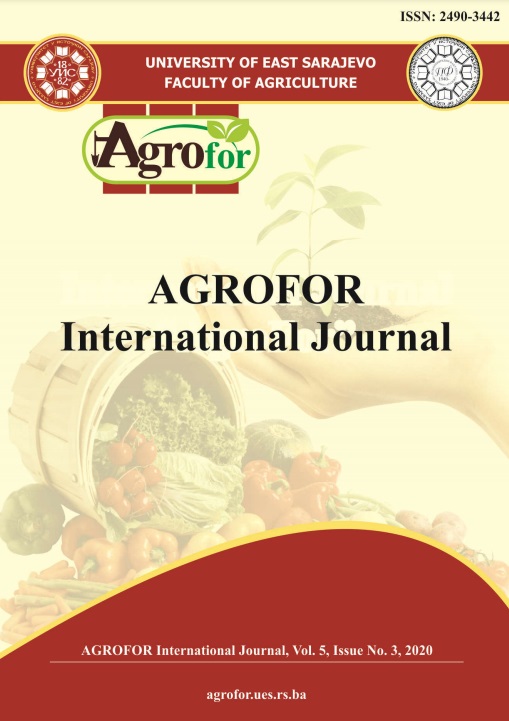COMPLEX ASSESSMENT OF BIOSOLID FOR AGRICULTURE USING LIVING ORGANISMS UNDER LABORATORY CONDITIONS
DOI:
https://doi.org/10.7251/AGRENG2003055PAbstract
The use of biosolids (treated municipal sewage sludge) as a fertilizer is the best
way of their disposal. However, not all of them are suitable for use as a fertilizer.
Biosolids should be subject to mandatory laboratory control to confirm their safety.
Two directions of research on biosolids are being improved: chemical and
biological. Chemical analysis methods allow us to determine the qualitative
composition of complex waste. The biological approach (use of living organisms)
allows us to estimate the total toxicity of all the components. Accordingly, a
distinctive characteristic of biological methods is the integrated approach. We
examined biosolid extract using a wide range of bioassay methods. As test
organisms, we took Daphnia magna Straus, Paramecium caudatum Ehrenberg,
Tetrahymena pyriformis, luminescent bacteria Escherichia coli. In addition, a
phytotest was carried out on the culture of Avena sativa L. and Raphanus sativus L.
None of the tests revealed a high toxicity of biosolid. Biosolid safety was
confirmed by a low content of potentially toxic water-soluble elements – (μg /l):
Al3+ – 980; Ba2+ – 19; B – 140; Mn – 360; Cu – 61; As – 57; Ni – 200; Pb – 1,4;
Sr2+ – 302; Cr – 18; Zn2+ – 310; Co – 30; Mo – 56; (mg/l): Na+ – 16,8; Fe – 1,0.
The bioassay methods make it possible to give an indicative safety assessment of
this type of object by the effect of readily soluble (readily available) components
from this object on living organisms and plants. The use of bioassay methods using
soil extraction as a control tool allows to take into account the combined effect of
the presence in the extraction of not only toxic elements that suppress the vital
activity of organisms, but also of elements that attract and stimulate the activity of
test-organisms.

